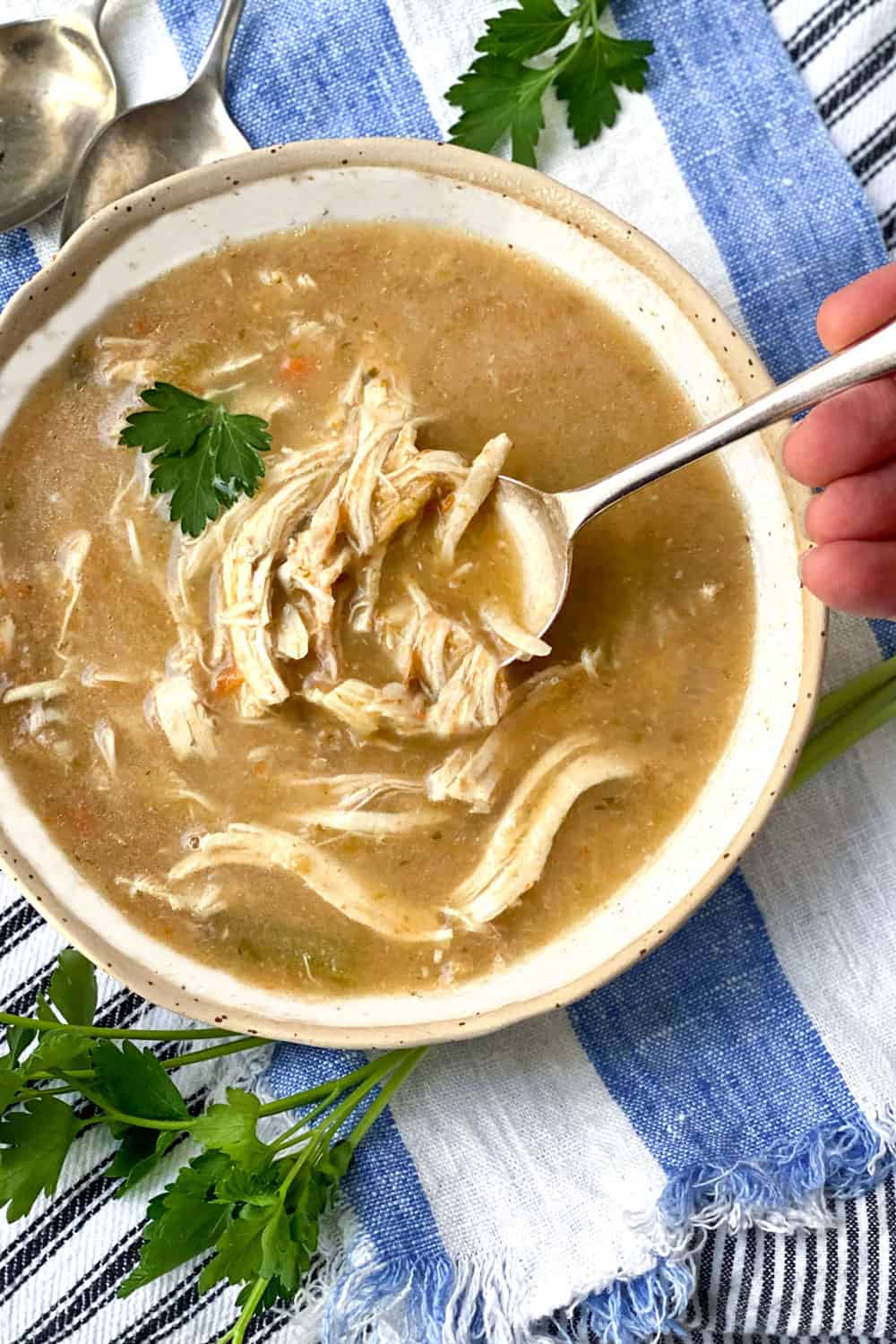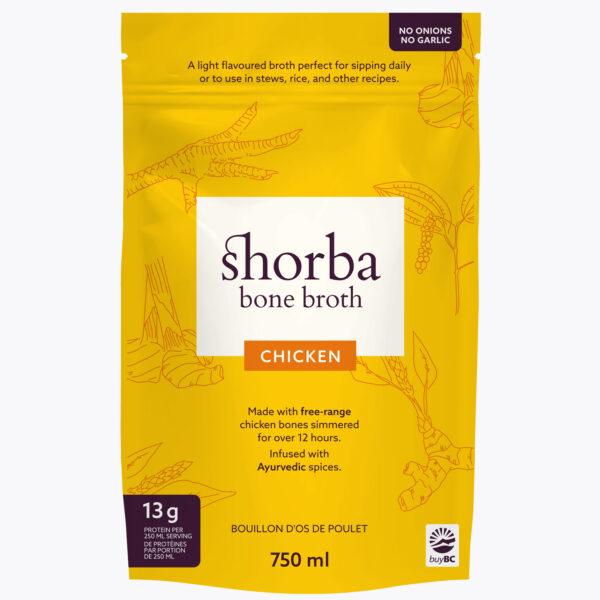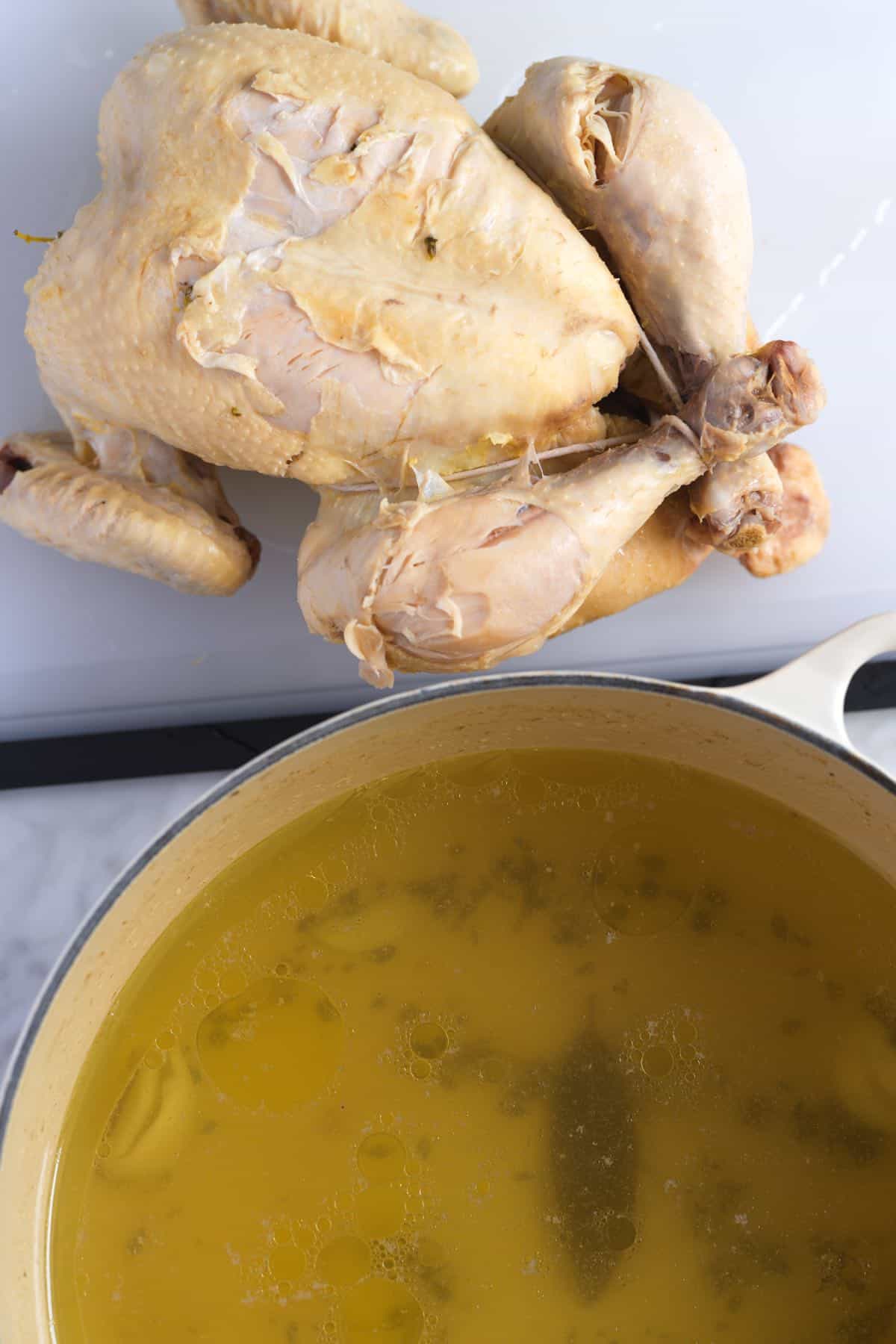Smoothie Upgrades: Add the Benefits Of Bone Broth for Nutrition
The Ultimate Guide to Making and Appreciating Organic Bone Broths in the house
Bone brew has actually obtained interest for its many health and wellness benefits and cooking convenience. Crafting natural bone brew at home permits individuals to regulate the high quality of components, making certain a nutritious result. Recognizing the choice of bones, crucial flavoring elements, and appropriate cooking strategies is important. As the process unravels, one may wonder how to raise their broth past the basics and include it right into everyday meals for improved flavor and nutrition.
Recognizing the Health And Wellness Conveniences of Bone Broth
Although bone brew has been a staple in numerous foods for centuries, its health and wellness advantages have gotten substantial interest recently. Rich in collagen, amino acids, and minerals, bone brew is frequently proclaimed for its potential to support joint health and wellness, improve intestine feature, and enhance skin flexibility. The jelly stemmed from prepared bones may help digestion and help seal the intestine cellular lining, potentially reducing problems like leaking gut syndrome.Furthermore, the presence of nutrients such as glucosamine and chondroitin may contribute to minimized swelling and discomfort relief in joints. Additionally, bone brew is moistening and can work as a nutritious base for stews and soups. Several proponents also claim that it enhances the immune system, thanks to its mineral account. On the whole, the revival of passion in bone brew is connected to its perceived capability to promote overall wellness and support various physical functions.
Choosing the Right Bones for Optimum Taste and Nourishment
What variables should one consider when picking bones for brew prep work? The kind of bones made use of substantially affects both flavor and dietary worth. First, it is essential to select bones that include a mix of marrow bones, joint bones, and meaty bones. Marrow bones give abundant tastes and healthy fats, while joint bones add collagen, enhancing the broth's dietary profile.Additionally, sourcing bones from pasture-raised or grass-fed animals guarantees greater quality and even more nutrients, as these animals are generally much healthier. The freshness of the bones is also important; picking bones from neighborhood butchers or farmers' markets can ensure perfect flavor. Bone size matters also; bigger bones release more jelly, leading to a richer brew. Ultimately, thinking about the sort of pet-- poultry, beef, or fish-- can influence the final taste, enabling functional brew choices tailored to private preferences.
Essential Components for a Flavorful Bone Broth

Quality Bone Option
The foundation of a delicious bone brew exists in the careful selection of high-quality bones. Sourcing organic, pasture-raised or grass-fed bones is necessary, as these alternatives are a lot more likely to be devoid of hazardous ingredients and offer superior nutrients. Varieties such as beef, hen, or lamb bones each give distinct tastes and health advantages. Bone types, consisting of marrow bones, knuckle bones, and oxtails, add gelatin and collagen, enhancing the broth's structure. Choosing bones with a mix of meat and connective tissue can also add richness and deepness. In addition, picking bones with visible marrow ensures a nutrient-dense brew, elevating the general high quality. Eventually, investing time in quality bone selection lays the groundwork for a nourishing and tasty broth.
Fragrant Taste Boosters
Selecting high-grade bones establishes the stage for a rich and healthy bone brew, but it is the addition of fragrant taste enhancers that absolutely raises the meal. Active ingredients such as onions, garlic, and carrots not only pass on sweetness yet also add depth to the broth. Fresh natural herbs like parsley, bay, and thyme leaves include an aromatic note, while spices such as black peppercorns and cloves present heat and complexity. Additionally, including a sprinkle of apple cider vinegar can help remove minerals from the bones, enhancing the broth. These taste enhancers produce a harmonious mix, changing a basic brew into a savory structure for sauces, stews, or soups, making it a functional element in any kind of culinary repertoire.
Step-by-Step Overview to Making Bone Broth in the house
Producing bone broth in the house can be a satisfying culinary venture that boosts both flavor and nourishment in various meals. To start, one must choose premium bones, ideally from grass-fed or natural resources. Roasting the bones at 400 ° F for about half an hour can intensify the flavor. Next off, move the roasted bones to a big pot or slow-moving cooker and cover them with cool water. Adding a sprinkle of vinegar aids essence minerals from the bones.Include aromatic veggies like onions, carrots, and celery for included deepness, together with natural herbs and spices as preferred. Bring the mix to a boil, after that decrease to a simmer. It is vital to allow the broth simmer for a minimum of 12 hours, however much longer is more suitable for maximum splendor. Finally, stress the brew via a fine-mesh sieve and store it in impermeable containers, ready to boost meals with its healthy significance.

Tips for Developing Your Bone Brew Simmer
While simmering bone brew, keeping the appropriate temperature level and timing is vital for attaining a savory and abundant result. A gentle simmer, preferably between 190 ° F and 210 ° F, helps remove maximum nutrients and tastes without boiling, which can make the brew cloudy. It is a good idea to monitor the pot very closely, adjusting the warmth as necessary to keep this simmer.Timing is additionally essential; a longer simmer, typically ranging from 12 to 48 hours, enables deeper flavor removal and collagen release. For chicken bones, a 12 to 24-hour simmer suffices, while beef bones gain from longer cooking times.Additionally, skimming off any type of foam or impurities that climb to the surface throughout the first few hours can boost the brew's quality and preference. Ensuring the pot is covered throughout simmering assists to retain dampness and heighten the flavors, making for an extra rewarding end item.
Imaginative Ways to Use Bone Brew in Your Cooking
Incorporating bone brew right into various dishes boosts both taste and dietary value. Chefs and home chefs alike find that using bone broth as a base for soups and stews improves depth and splendor, transforming straightforward dishes into hearty dishes. It can also be employed in risottos, where the broth changes water, allowing the grains to absorb its savory essence.Additionally, bone broth works as an outstanding cooking fluid for grains like quinoa or rice, infusing them with nutrients and flavor. For an included spin, it can be utilized in braising meats, causing tender, flavorful results. Even sauces take advantage of a dash of bone broth, improving their taste profile.Moreover, bone brew can be included into healthy smoothies for an unforeseen health and wellness increase, offering healthy protein and nutrients without jeopardizing taste. These creative applications display the versatility of bone brew in day-to-day cooking, making it a very useful cooking area staple.
Storing and Protecting Your Self-made Bone Broth
Appropriate storage space and preservation of homemade bone brew is crucial for preserving its taste and nutritional advantages. Cold methods and refrigeration ideal techniques play an essential function in expanding the broth's rack life. Understanding these techniques can aid assure that the broth stays scrumptious and risk-free for future usage.

Freezing Strategies Described
Cold techniques are essential for effectively storing and protecting home made bone broth, ensuring its rich flavors and nutrients stay intact for future use. To freeze bone brew, it is recommended to allow it cool entirely before moving it to storage containers. Glass jars, silicone molds, or sturdy freezer bags appropriate alternatives. When making use of jars, leave room at the top for development during freezing. Portioning the broth into smaller sized quantities enables simple thawing and reduces waste. Tag containers with the day and components for very easy recognition. For peak top quality, consume the frozen broth within 3 to six months - Chicken Broth. Thawing can be carried out in the refrigerator or by utilizing a microwave, ensuring that the broth is warmed thoroughly prior to consumption
Refrigeration Best Practices
While several concentrate on freezing as a method of preservation, refrigeration additionally plays a crucial duty in keeping homemade bone broth properly. Once cooled, bone broth need to be moved to closed containers, ensuring very little air exposure to avoid spoilage. It is advisable to cool broth within two hours Chicken Broth of cooking to keep its top quality. Commonly, homemade bone brew can be kept in the refrigerator for approximately five days. Classifying containers with days can help track quality. For peak flavor and security, brew must be reheated to a moving boil prior to usage. If longer storage is called for, cold continues to be an excellent alternative, yet proper refrigeration practices assure that bone brew continues to be tasty and healthy for short-term use.
Often Asked Questions
Can I Use Frozen Bones for Making Bone Broth?
The question of making use of icy bones for bone brew emerges often (Organic Bone Broths). Experts concur that icy bones can be utilized effectively, but they need to be thawed before cooking to guarantee optimal taste and nutrient removal
How Much Time Can I Shop Homemade Bone Brew?

Is It Safe to Reheat Bone Broth Multiple Times?
Reheating bone brew numerous times can pose safety problems - Benefits Of Bone Broth. Each reheating cycle increases the danger of microbial growth. It is recommended to reheat just once and save any type of leftovers quickly to guarantee safety and security and high quality
Can I Add Veggies to the Brew for Flavor?
Including veggies to brew boosts taste and nutritional worth. Typical choices include carrots, onions, and celery. The veggies instill their significance right into the broth, creating a richer and much more tasty end product.
What's the most effective Means to Thaw Frozen Bone Brew?
To thaw icy bone brew, one can position it in the fridge overnight, utilize a microwave on reduced heat, or immerse the sealed container in warm water, making sure also defrosting without jeopardizing flavor or nutrients. It is vital to pick bones that include a mix of marrow bones, joint bones, and meaningful bones. Marrow bones supply healthy and balanced fats and rich flavors, while joint bones add collagen, improving the brew's nutritional profile.Additionally, sourcing bones from grass-fed or pasture-raised pets guarantees greater quality and more nutrients, as these pets are typically much healthier. Bone types, consisting of marrow bones, knuckle bones, and oxtails, add gelatin and collagen, boosting the broth's structure. Picking high-grade bones sets the stage for a nutritious and abundant bone brew, but it is the enhancement of aromatic flavor enhancers that truly raises the recipe. Even sauces profit from a dash of bone broth, enhancing their taste profile.Moreover, bone brew can be incorporated into smoothies for an unforeseen health increase, giving protein and nutrients without jeopardizing taste.